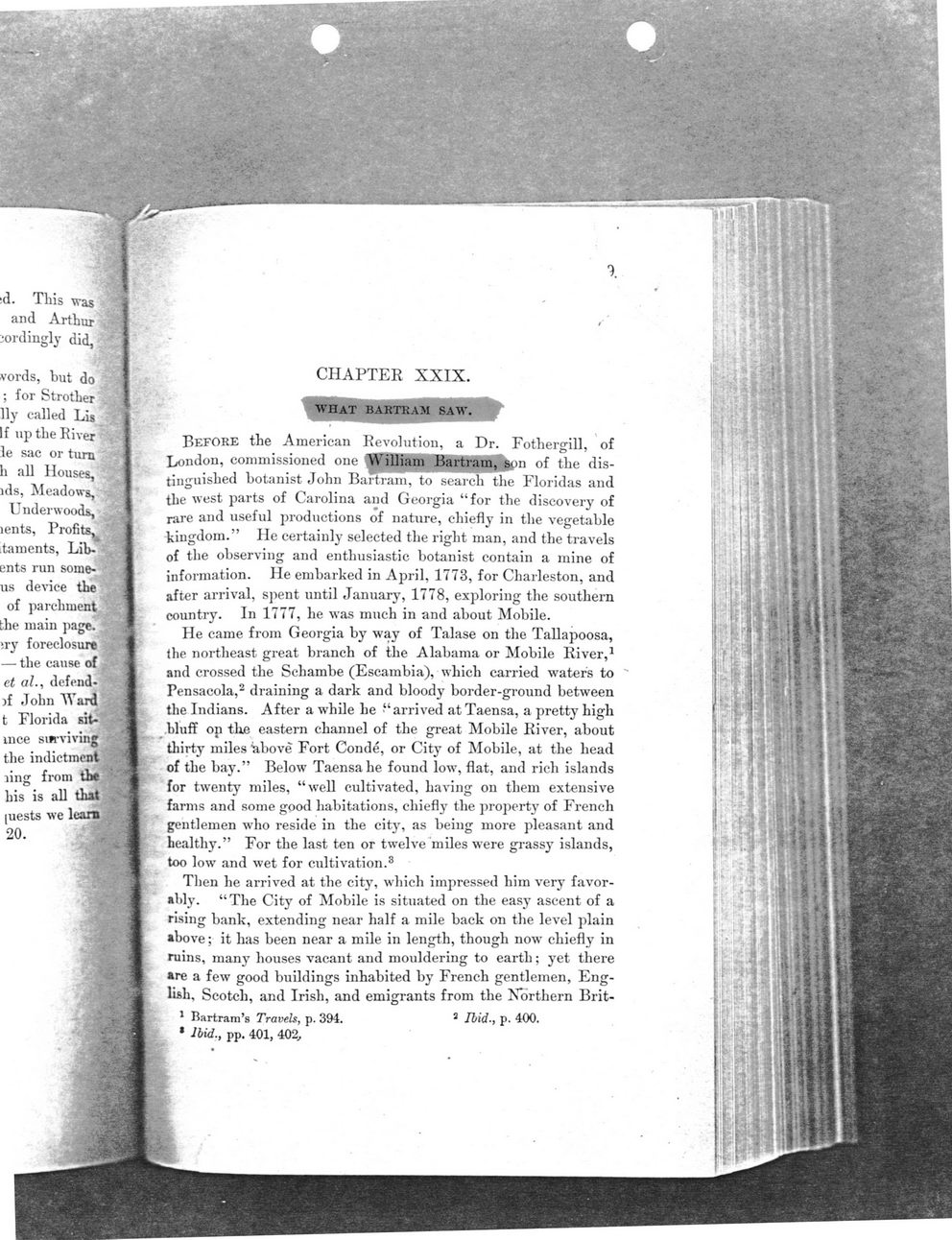This text was obtained via automated optical character recognition.
It has not been edited and may therefore contain several errors.
-d. This was' and Arthur 1 iordingly did,' ? vords, but do ; for Strother Uy called Lu?M If up the River ? le sac or h all Houses, i-v, -ids, Meadows, Underwoods, \ lents, Profits^ ?r, taments, Lib-ents run some* * J us device the ' , ^ r-' of parchment.^ the main page. *$i >ry foreclosure ? the cause of et al., defend-jf John Ward t Florida sit- ~ nice surviving '|j the indictment .filing from the jj-jf his is all tint [uests we leara 20. i 'k ? 1 *? - $ CHAPTER XXIX. Wi- hat bartram saw. Before the American Revolution, a Dr. Fotliergill, of London, commissioned one ^fiBmnV Baifc-amTjpn of the distinguished botanist John Bartram, to search the Floridas and the west parts of Carolina and Georgia ?for the discovery of rare and useful productions of nature, chiefly in the vegetable kingdom.? lie certainly selected the right man, and the travels of the observing and enthusiastic botanist contain a mine of information. He embarked in April, 1773, for Charleston, and after arrival, spent until January, 1778, exploring the southern country. In 1777, he was much in and about Mobile. He came from Georgia by way of Talase on the Tallapoosa, the northeast great branch of the Alabama or Mobile River,1 and crossed the Scliambe (Escambia), which carried waters to Pensacola,2 draining a dark and bloody border-ground between the Indians. After a while he ?arrived at Taensa, a pretty high .bluff op the eastern channel of the great Mobile River, about thirty miles Wbove Fort Conde, or City of Mobile, at the head of the bay.? Below Taensa he found low, flat, and rich islands for twenty miles, ?well cultivated, having on them extensive farms and some good habitations, chiefly the property of French gentlemen who reside in the city, as being more pleasant and healthy.? For the last ten or twelve miles were grassy islands, too low and wet for cultivation.3 Then he arrived at the city, which impressed him very favorably. ?The City of Mobile is situated on the easy ascent of a rising bank, extending near half a mile back on the level plain above; it has been near a mile in length, though now chiefly in ruins, many houses vacant and mouldering to earth; yet there are a few good buildings inhabited by French gentlemen, English, Scotch, and Irish, and emigrants from the Northern Brit- 1 Bartram?s Travels, p. 394. 3 Ibid; p. 400. Ibid., pp. 401, 402, ?i?- SL-a. js' Uf&W : tip1 " 4 - ?

Bartram Colonial-Mobile-What-Bartram-Saw-p.-237